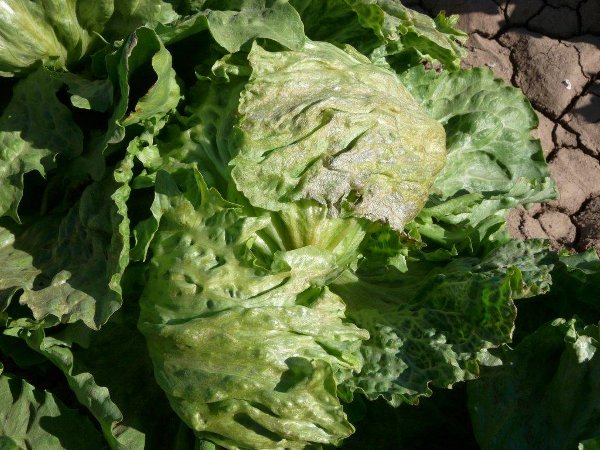
Winter produce supply uncertain after freezing temps
Freezing temperatures dip down to 18 degrees in the nation’s “Winter Salad Bowl” region in Southwestern Arizona and Southern California which could result in a shortage of some winter vegetables;University of Arizona Cooperative Extension agent Kurt Nolte, Yuma County, expects a shortage of some produce in the nation at some point;Growers in Yuma County area and neighboring southern California produce about 95 percent of the nation’s winter vegetable supply for salads;Most of the area’s lemon crop was harvested before the freeze occurred.

Freezing temperatures as low as 18 degrees in the nation’s “Winter Salad Bowl” region in Southwestern Arizona and Southern California could result in a shortage of some winter vegetables.
“I expect a shortage of some produce for the nation at some point,” said Kurt Nolte, University of Arizona Cooperative Extension director, Yuma County, Yuma, Ariz. “As a result, I’d expect (grower) prices to increase.”
Growers in Yuma County area and neighboring southern California produce about 95 percent of the nation’s winter vegetable supply destined for salads. In Yuma County, Nolte says deep freezes on the nights of Feb. 2-3 damaged baby leaf green vegetables the hardest. The amount of damage depended in part on the plant growth stage.
“About 90 percent of the baby leaf greens vegetable fields have total crop failure,” Nolte said. “More susceptible varieties suffered up to a 100 percent crop loss.”
About 25,000 acres of baby greens are grown in Yuma County. Fields with high damage losses are generally plowed under. The region is nearing the end of the winter growing season so no additional vegetables will be planted. Vegetable production will shift to Central California.
Nolte estimates 50 percent to 60 percent of the Yuma County head lettuce crop was impacted by the weather. Blistering was found on romaine lettuce which leads to browning on the blistered area.
Cauliflower and broccoli had less damage as the plants are more tolerant to freezing temperatures.
A shot of not-as-cold weather is forecast for the Yuma area next week.
Citrus is another major crop in the low desert and impacted by the cold. About 75 percent of the citrus grown in Yuma County are lemons. About three-quarter of the crop was harvested when the freezing temperatures arrived.
Citrus grower and packer Mark Spencer of Associated Citrus Packers in Yuma says temperatures dropped to the mid 20s on his operation.
“It’s too early to assess any damage in the orchard,” Spencer said. “In some colder pockets there may be some defoliation on the trees. We’ll get a better handle on that in the next several days.”
Leaf damage may not impact next year’s crop. The bigger question is whether the cold damaged fruiting wood which produces blooms for the next lemon crop.”
Spencer will continue to pack and ship lemons for the fresh market but will send some of the remaining fruit to a bi-products plant in California. Spencer already sends some lower-grade fruit to the plant.
About 40 percent of Spencer’s Minneola crop remains on the tree. The Minneola handles cold temperatures better due to the fruit’s high sugar content. Grapefruit, also grown by Spencer, tolerates colder weather due to its thick skin.
Citrus grower Jerry Driedger, manager of Marlin Ranches in Yuma, also had harvested most of the lemon crop when the cold snap arrived. Driedger reported 19 degrees in one orchard.
“For a February freeze this was really brutal,” Driedger said. “The biggest problem was a dew point level of minus 13 which was combined with wind which is rare.”
In advance of the cold snap, Driedger ran irrigation water in the orchards for several days. Water on the ground, if frozen, releases energy which warms up the ground several degrees to help prevent tree damage.
About the Author(s)
You May Also Like





